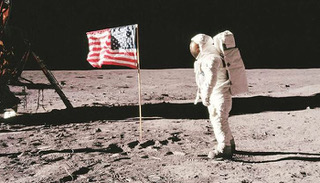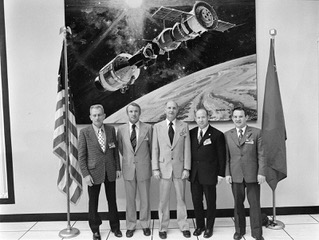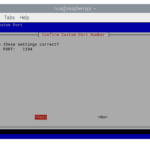Recently, the Indian space agency ISRO successfully soft-landed a spacecraft on the lunar south pole. This makes India the first country to land a spacecraft on the challenging southern region of the moon, where there is a high probability of finding ice and resources for future human spaceflight missions to deep space. India aspires to send a crewed mission to the moon by 2025 under its Gaganyaan mission. In the new space race, China has already landed a spacecraft on the moon in 2021 and is also planning to send its first crewed mission to the moon by 2030.
A feat already achieved by the United States 50 years back is now a new space race. The United States is again planning to return humans to the moon, including the first woman and first person of color, by 2025 under its Artemis III mission. Though ISRO’s Gaganyaan and NASA’s Artemis III are independent space programs, ISRO and NASA signed a memorandum of understanding (MoU) in 2020 for cooperation in lunar exploration with the intent to share information and expertise on lunar science, exploration, and human spaceflight. The two nations, along with nearly 30 other nations, are signatories of the Artemis Accord, which agrees on a set of principles ensuring transparency, interoperability, emergency assistance, and sharing of resources as per international laws for lunar missions.
At the outset of a new space era, it is worth remembering NASA’s Apollo missions, which left a lasting legacy in the area of space exploration. The Apollo program is one of the greatest achievements in the history of human space technology. The program was a series of space missions conducted by the United States’ National Aeronautics and Space Administration (NASA) from 1961 to 1972 with the goal of landing humans on the moon and safely returning them to Earth. The program manifested just 2 years after the formation of NASA in 1958. A total of 17 missions were conducted under the space program. It was under the Apollo program that on the Apollo 11 mission, the United States became the first nation to land humans on the moon, and Neil Armstrong became the first person to do a walk on the moon. The program was a victory cry for the United States in a Cold war era space race with the Soviet Union. Between 1969 and 1972, the United States sent 12 astronauts to the moon and got them back safely to Earth.
Let us recall the Apollo missions and look back to some details of NASA’s and humanity’s historic achievements.
Apollo missions overview
The Apollo program was launched during the Cold War era when the United States and the Soviet Union were competing with each other to demonstrate their technological and ideological superiority. In 1957, the Soviet Union scored a significant victory by launching Sputnik 1, the world’s first artificial satellite. This marked the beginning of a human venture in exploring outer space. The event sent shockwaves through the United States and galvanized its efforts in space technology. In 1958, the United States formed the National Aeronautics and Space Administration (NASA) for research and development in space technology. When in 1961, the Soviet Union successfully launched Yuri Gagarin, the first human in space, the rivalry between the two superpowers in space further intensified.
By the very time of its inception, NASA harbored ambitions to send humans into space and return them safely to earth. The Project Mercury was launched. Under Project Mercury, six missions were conducted between 1961 and 1963, culminating in the flight of astronaut John Glenn, who became the first American to orbit the Earth. Project Gemini followed, with ten missions between 1965 and 1966, focused on testing the technology and procedures required for lunar missions. President John F. Kennedy, in a speech to Congress on May 25, 1961, formally announced a vision to land a man on the moon and return him safely to Earth. He stated, “I believe that this nation should commit itself to achieving the goal, before this decade is out, of landing a man on the Moon and returning him safely to the Earth.” Then, the Apollo program was launched, and in 1969, the United States successfully sent the first crewed mission to the moon with Neil Armstrong and Buzz Aldrin, who were the first humans to walk on the lunar surface. Despite early success in space, the Soviet Union never sent humans to the moon due to a combination of technical, financial, and geopolitical factors.
The Apollo program comprised a series of missions, each with specific objectives and milestones. These missions can be broadly categorized into three types:
Apollo Command/Service Module (CSM) missions: These missions included crewed spacecraft that orbited the Moon without landing. The primary objectives were to test the spacecraft and gather lunar data from orbit.
Apollo Lunar Module (LM) missions: These were crewed missions to the moon, allowing astronauts to land on and explore the Moon’s surface. In each of these missions, a lunar module was carried by the spacecraft to land astronauts on the lunar surface and let them return safely to Earth.
Apollo-Soyuz test project (ASTP): A joint mission with the Soviet Union in 1975, which marked the end of the Apollo program.
Apollo 1
Originally designated AS-204, this was the first mission scheduled to be a crewed spaceflight. The mission ended tragically when a cabin fire broke out during a pre-launch test on January 27, 1967, resulting in the death of astronauts Gus Grissom, Ed White, and Roger B. The fire ignited during the plug-out test due to a short circuit or some electrical fault. The command module was filled with high-pressure oxygen in preparation for the launch, which increased the flammability of materials in the spacecraft. Due to the hatch design and mechanisms, astronauts could not quickly open the spacecraft’s door and escape. Because of the high atmospheric pressure inside the spacecraft, there was a communication problem that further hindered the rescue operation. The loss of life in the accident is mainly attributed to a lack of safety measures and the spacecraft’s design. Like, the astronaut’s suits were not fire-resistant and contributed to the rapid spread of the flames. The mission was later renamed Apollo 1 in honor of the astronauts who lost their lives in the accident.
Apollo 4
Officially designated as AS-504, this mission was launched on November 9, 1967. It was an uncrewed test flight of the Saturn V rocket and the Apollo Command/Service Module (CSM). The main objective of the mission was to test the launch vehicle’s performance.
Apollo 5
Apollo 5, the mission designated AS-204 was launched on January 22, 1968. It was an uncrewed mission testing the lunar module in Earth orbit to examine its ability to operate in space.
Apollo 6
Designated as AS-502, this mission was launched on April 4, 1968. It was another uncrewed mission to perform a final test flight of the Saturn V launch vehicle and the Apollo Command/Service Module. The mission went through several technical problems but proved to be a valuable learning experience.
Apollo 7
This was the first crewed Apollo mission carried out between October 11 and October 22, 1968. It orbited Earth and tested the command/service module’s ability. This mission was critical for gaining confidence in the spacecraft and paving its path to the moon.
Apollo 8
This was the first crewed mission to lunar orbit. Astronauts Frank Borman, James Lovell, and William Anders circled the Moon ten times and provided iconic photographs of Earthrise from lunar orbit. However, the mission did not land on the moon and returned to Earth after orbiting around the moon. The mission was conducted between December 21 and December 27, 1968.
Apollo 9
The Apollo 9 was aimed at testing the lunar module in the earth orbit, like docking and undocking maneuvers with the command/service module. The test mission was carried out between March 3 and March 13, 1969.
Apollo 10
This mission is often referred to as ‘Dress Rehearsal’ for the moon landing. The mission conducted between May 18 and May 26 of 1969 launched a spacecraft in lunar orbit to within 15.6 km of the lunar surface but did not land.
Apollo 11
This was the iconic mission that landed a man on the moon for the first time ever. Astronaut Neil Armstrong became the first human to walk on the Moon on July 20, 1969, at 20:17 UTC. He was joined by Buzz Aldrin 19 minutes later while Michael Collins orbited above. The entire mission was conducted between July 16 and July 24 of 1969 and demonstrated the safe landing and return of humans from the lunar surface. “That’s one small step for man, one giant leap for mankind.” were Neil Armstrong’s historic words upon becoming the first human to set foot on the lunar surface.
Apollo 12
This was a second crewed mission to the lunar surface conducted between November 14 and November 24 of 1969. Commander Charles ‘Pete’ Conrad and lunar module pilot Alan L. Bean landed on the moon and performed two moonwalks. The command module pilot Richard F. Gordon stayed in orbit.
Apollo 13
Often referred to as ‘successful failure’, Apollo 13 is a story of overcoming adversity in space exploration. Launched on April 11, 1970, the mission met an accident just after approximately 56 hours on its way towards the moon. The spacecraft with astronauts James A. Lovell Jr., John L. Swigert Jr., and Fred W. Haise Jr. onboard experienced a catastrophic failure in one of the spacecraft’s oxygen tanks. This resulted in the loss of electrical power, loss of cabin heat, and a significant reduction in life support systems. Given the gravity of the situation, NASA immediately aborted the mission and instead executed a free-return trajectory that would take the spacecraft around the Moon and back to Earth without entering lunar orbit.
The Apollo 13 crew, with the cooperation of ground control in Houston, Texas, improvised solutions to conserve power, stabilize the spacecraft’s systems, and ensure a safe return to Earth. The crew survived in the Lunar Module (LM), Aquarius, which was designed for lunar landing but was adapted to serve as a lifeboat. They used the Lunar Module’s descent engine to perform critical course corrections. On April 17, 1970, the crew successfully reentered the earth’s atmosphere, and the command module safely splashed down the Pacific Ocean. All three astronauts were recovered by the USS Iwo Jima.
Though Apollo 13 failed to land on the moon, it demonstrated the resilience and adaptability of NASA’s space program. The mission remains a remarkable example of problem-solving, quick thinking, and teamwork to overcome adversity in space exploration. It also prompted a comprehensive review of spacecraft systems and safety protocols, leading to improvements in subsequent Apollo missions.
Apollo 14
This was the third crewed mission to land on the moon. Astronauts Alan Shepard and Edgar Mitchell conducted two moonwalks, including a round of golf, while the command module pilot Stuart A. Roosa stayed in orbit. The mission was conducted between January 31 and February 9, 1971.
Apollo 15
The fourth crewed mission to successfully land on the moon, Apollo 15, was conducted between July 26 and August 7 of 1971. Astronauts David R. Scott and James B. Irwin conducted three moonwalks and drove the Lunar Roving Vehicle (moon buggy) for extended exploration. The command module pilot Alfred M. Worden stayed in the orbit.
Apollo 16
Apollo 16 was a fifth crewed mission that landed on the lunar surface. Astronauts John W. Young and Charles M. Duke explored the lunar highlands and conducted three moonwalks while Thomas K. Mattingly took the control of command module. The mission was accomplished between April 16 and April 27 1972.
Apollo 17
This was the final Apollo lunar mission that landed a human crew on the lunar surface. Astronauts Eugene A. Cernan and Harrison H. Schmitt landed on the moon and performed a series of scientific experiments along with exploring the lunar surface on a rover. Ronald E. Evans remained in charge of the command module.
Apollo-Soyuz test project
The Apollo-Soyuz Test Project (ASTP) was the first joint spaceflight between the United States and the Soviet Union launched in 1975. The mission symbolized a thaw in the Cold War space race and paved a path for international cooperation in space, leading to the development of the International Space Station (ISS) in the future. The primary objective of ASTP was to test the compatibility of spacecraft systems from different countries. The American Apollo spacecraft was launched from Kennedy Space Center in Florida on July 15, 1975, and the Soviet Soyuz spacecraft was launched from Baikonur Cosmodrome in Kazakhstan. The two spacecrafts successfully docked in orbit on July 17, marking a significant achievement in space technology.
A number of scientific experiments, including Earth observations and biomedical studies, were conducted during the mission. The crew members Thomas P. Stafford, Vance D. Brand, and Donald K. “Deke” Slayton from the United States safely returned by landing in the Pacific Ocean, while Alexei Leonov and Valeri Kubasov from the Soviet Union landed in Soviet territory after successful joint activities for 44 hours in space.
Why Apollo missions were discontinued
The time the Apollo missions were conducted was a golden era for space science and research. It was the first time that humans explored some other celestial body and experienced travel, live, and rescue in space. After Apollo 17, the United States discontinued the program due to a variety of reasons.
The Apollo program was incredibly expensive. It consumed a significant portion of NASA’s overall budget, leaving fewer resources for other space explorations and scientific experiments. After six successful crewed missions to the moon, public interest in lunar missions began to decline. This decrease in public enthusiasm made it challenging to justify the high costs of continuing the program. The Apollo missions, despite being incredibly successful, also demonstrated the challenges and risks of crewed space exploration. The Apollo 13 highlighted the inherent dangers of human spaceflight.
By the time of Apollo 17 in 1972, most of the scientific goals of the program were achieved. The lunar samples, experiments, and data collected during the missions provided valuable insights into the Moon’s geology, history, and formation. So, now NASA’s focus has shifted to exploring Mars and other celestial bodies of the solar system. As nothing profound was discovered on the moon, continuing lunar missions, specifically crewed missions to the moon, was almost pointless. NASA slowly shifted towards uncrewed missions to other celestial bodies to advance scientific knowledge about the solar system and deep space.
The geopolitical reasons, like the rising costs of the Vietnam War and domestic social programs, also led to a revaluation of national priorities, with some arguing that the money spent on Apollo could be better used elsewhere. Even after the magnificent success of the United State’s Apollo program, the Soviet Union never sent any crewed missions to the moon. No other nation at that time was so developed to enter the space race. Many nations just gained independence from the British Empire in the 1950s. If they had any space programs, those were either driven by the Cold War between the United States and the Soviet Union or were adopted in the wake of developmental needs for the potential use of space technology in telecommunications, weather forecasting, agriculture, and resource management. The space race was almost over. Instead, an era of international cooperation in space technology and exploration just took off.
Why an all-new space race to the moon?
In 1998, NASA’s Lunar Prospector mission provided strong evidence of the presence of water ice on the Moon. The Lunar Prospector spacecraft carried a neutron spectrometer instrument designed to detect hydrogen, a key component of water, in the form of water ice. This instrument detected elevated levels of hydrogen at the lunar poles, suggesting the presence of water ice in permanently shadowed regions within polar craters. The sunlight never reaches these craters. That is why these craters are extremely cold and are thought to trap water ice that could have been deposited by comets or other sources over billions of years.
Later other lunar missions like Chang’e 4 by the China National Space Administration (CNSA) and Chandrayaan-1 by the Indian Space Research Organization (ISRO) further discovered evidence of lunar water ice, specifically in the south pole of the moon. Since the evidence of water ice on the lunar south pole has been collected, a new space race has begun. The moon is now seen as a potential gateway for crewed space missions into deep space where spacecraft could dock on the moon for refueling, storing water and other resources for human spaceflights to other celestial bodies of the solar system. Also, space tourism has an all-new potential due to emerging cost-effective space engineering.
This will be a race again. Like in the past, a new emerging cold war has again shadowed the potential of human space exploration. While democratic nations like the United States, India, and Japan have agreed to international cooperation in lunar exploration under the Artemis Accord, communist nations like Russia and China are unlikely to join the team. In a new multi-polar world, whether the democracies or the communists will take a lead in the new space race, only time will tell.
You may also like:
Filed Under: Aerospace, Articles, Featured














Questions related to this article?
👉Ask and discuss on Electro-Tech-Online.com and EDAboard.com forums.
Tell Us What You Think!!
You must be logged in to post a comment.